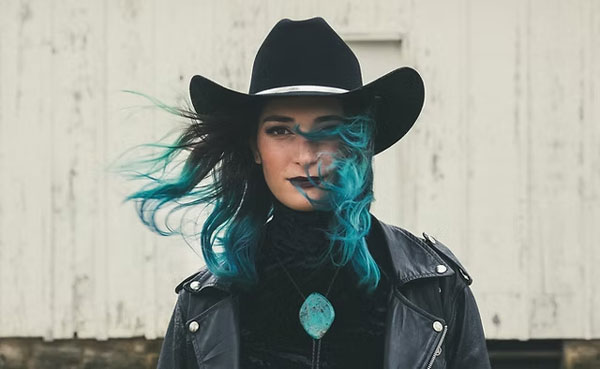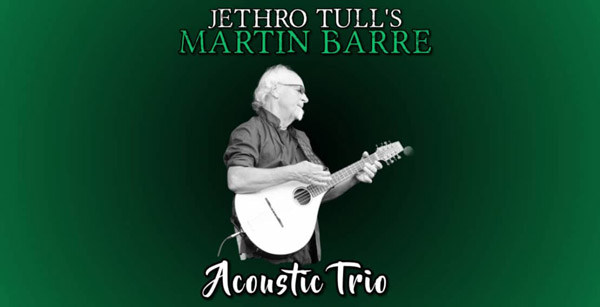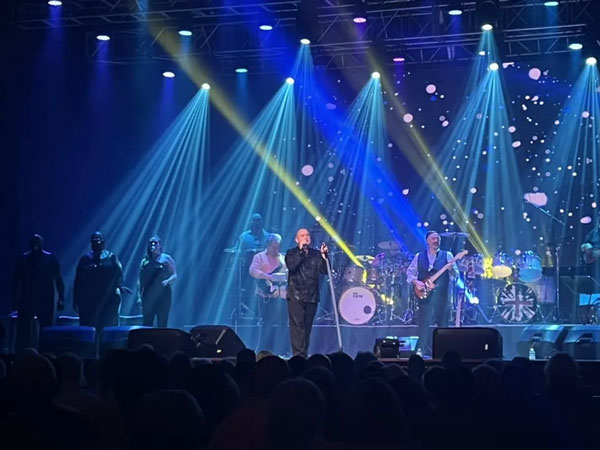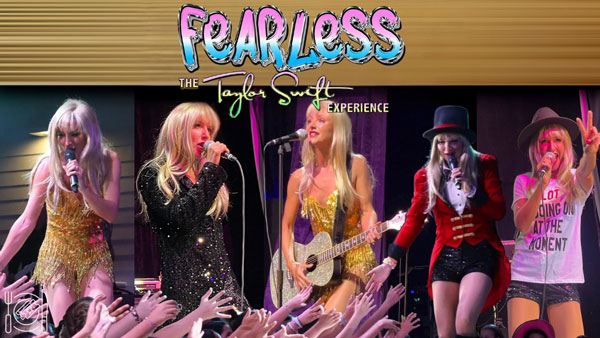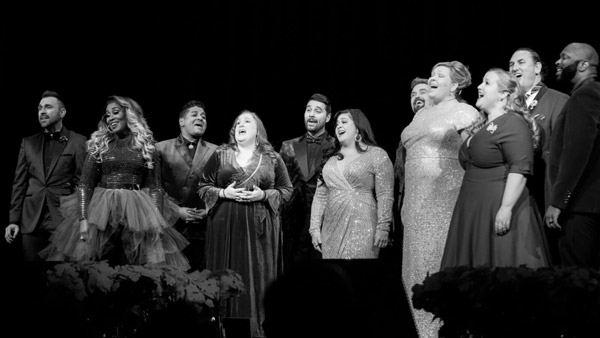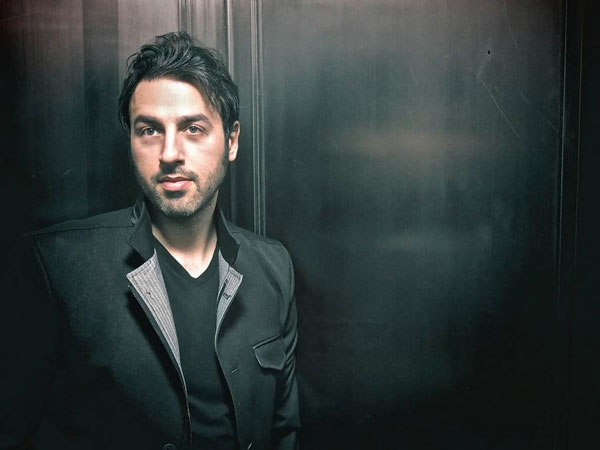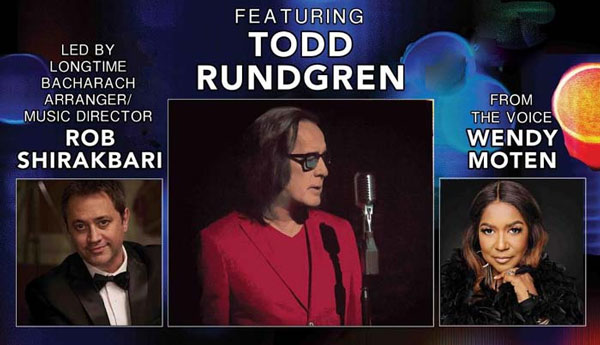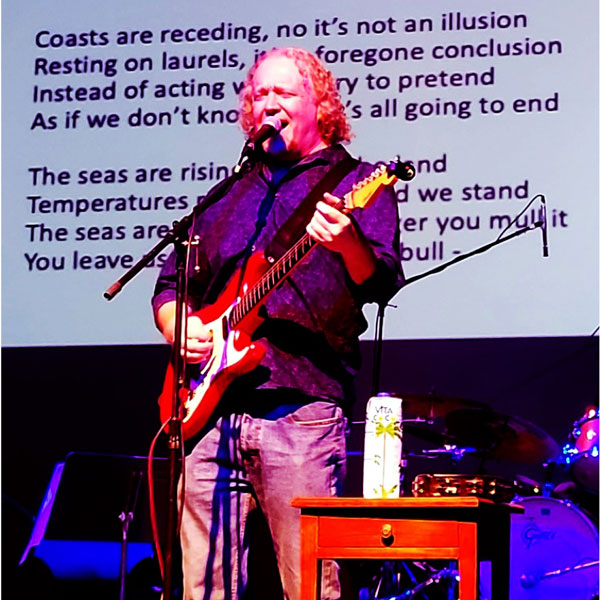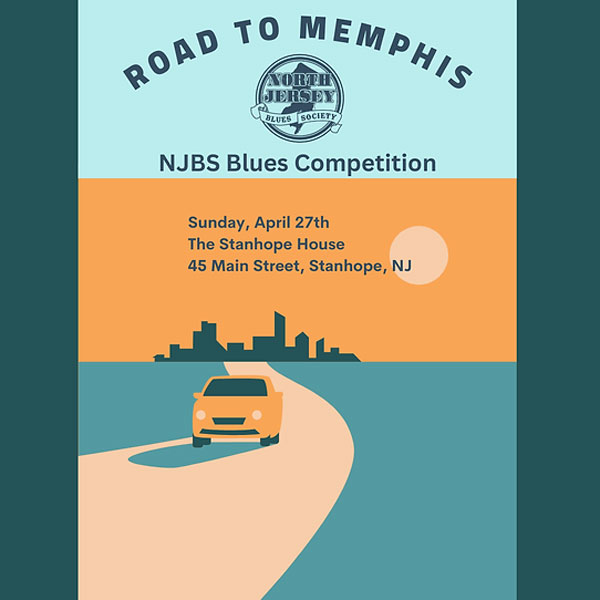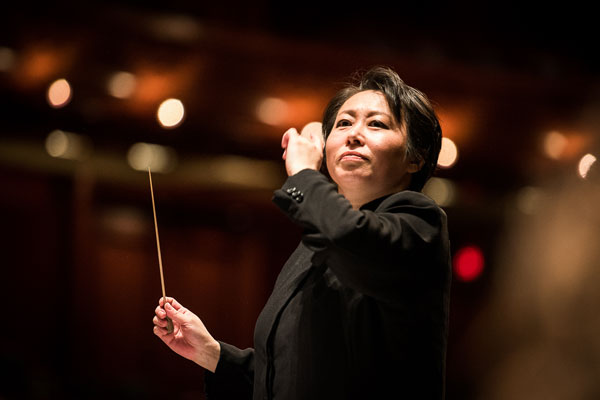By Gary Wien, JerseyArts.com
originally published: 01/08/2020
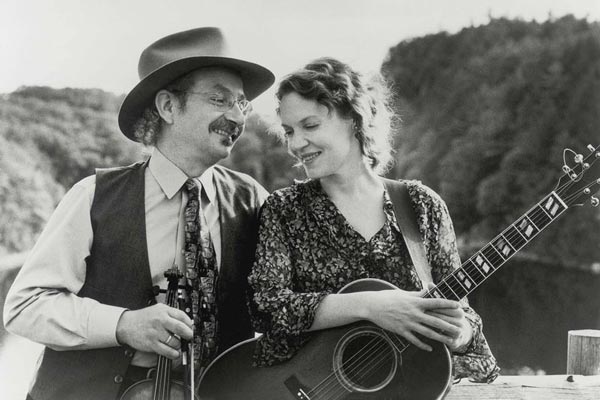
Art has always been about connecting us to the past. Hundreds of years after Shakespeare’s death, theatres around the world still perform his plays. People visit museums to see works by artists from the Renaissance era. And music from more than 150 years ago fits nicely into sets by Jay Ungar and Molly Mason, a married duo whose song “Ashokan Farewell” was the hallmark of the Ken Burns’ Civil War series.
The couple plans to play some of their favorite wintry tunes – songs from their own extensive catalog as well as from artists they love – when they perform at Hopewell Theater on January 10th.
Part of the experience in seeing them live is the chance to be introduced to artists from long ago and to have the music be placed in context.
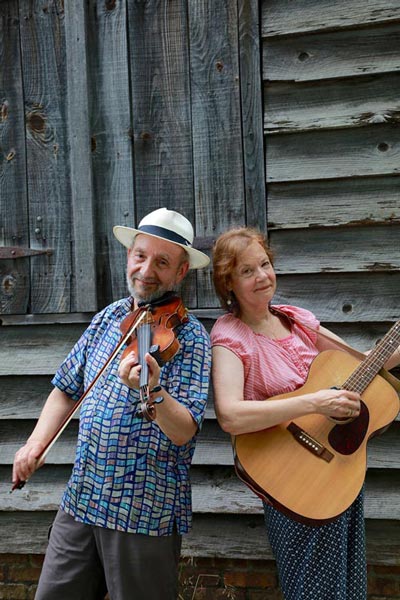 “I enjoy that as much as performing originals,” explained Molly Mason. “A lot of the songs that we spotlight from the past and give people a little background information on are ones that they’re often familiar or somewhat familiar with. They’ve heard it or heard parts of it, whether on a television commercial or in school when they were growing up or whenever, but they don’t know the origin of it or its background. To me, it really connects us with the past and connects us with our ancestors.”
“I enjoy that as much as performing originals,” explained Molly Mason. “A lot of the songs that we spotlight from the past and give people a little background information on are ones that they’re often familiar or somewhat familiar with. They’ve heard it or heard parts of it, whether on a television commercial or in school when they were growing up or whenever, but they don’t know the origin of it or its background. To me, it really connects us with the past and connects us with our ancestors.”
Jay Ungar notes that streaming services have made a large percentage of the recorded music in history available at our fingertips. But, unfortunately, it is almost universally presented without context.
“If somebody is doing a song from the past, a person listening to it might think it was written a week or two or a few years ago and not realize it came out in 1863 or whenever,” said Ungar. “So one of the things we like to do when we’re bringing in songs from the Civil War or the swing era or the golden age of country music is to contextualize. It’s not a lecture, but we try to place things in time and place so it helps people understand how this great Americana world of music came about and what the roots might be.”
“I like to say it’s not a lecture, it’s a connecture,” adds Mason.
Ungar grew up in the Bronx and Mason is from Washington State. He was raised on pop music of the 1940s and ’50s, while she preferred traditional fiddle music and ’30s and ’40s popular tunes. They met while each performed at The Towne Crier in New York during the late 1970s. Musically, they hit it off and began playing together from time to time. Mason left for Minnesota to work in the house band of Garrison Keillor’s new radio show “A Prairie Home Companion” and Ungar put together a band with fellow fiddlers Evan Stover and Matt Glaser and guitarist Russ Barenberg called Fiddle Fever. When the band needed a bassist, Mason signed on and the group released a pair of records.
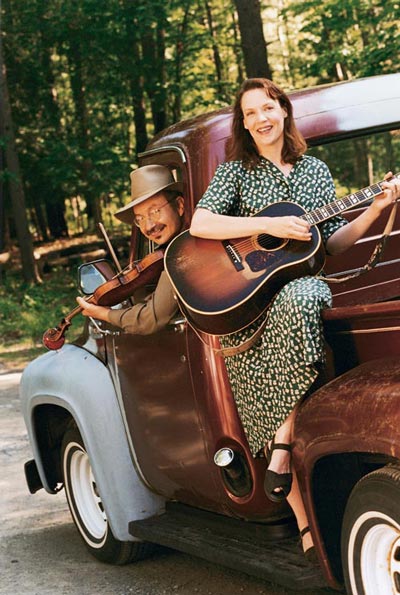 Around this time, two very important pieces of Unger and Molly’s history took place: Ungar’s Ashokan Fiddle & Dance Camps launched as a destination for enthusiasts of American music and dance traditions, and band members Glaser and Barenberg began working with a young filmmaker named Ken Burns on his film “The Brooklyn Bridge.” The former became an annual tradition that is celebrating its 40th anniversary this year and the latter led to a partnership that would soon take Jay and Molly to heights they could never have imagined.
Around this time, two very important pieces of Unger and Molly’s history took place: Ungar’s Ashokan Fiddle & Dance Camps launched as a destination for enthusiasts of American music and dance traditions, and band members Glaser and Barenberg began working with a young filmmaker named Ken Burns on his film “The Brooklyn Bridge.” The former became an annual tradition that is celebrating its 40th anniversary this year and the latter led to a partnership that would soon take Jay and Molly to heights they could never have imagined.
“When I wrote ‘Ashokan Farewell,’ it initially didn’t have a name and I didn’t think of it as something I would share,” recalled Ungar. “I wrote it out of a feeling of loss and longing - almost despair. It was the third summer of the camps and they were pretty much an experiment. I didn’t know if we’d do a fourth or fifth year; I was home and really missed the deep connection to other people in this nature preserve that took us away from the crazy world around us and let us focus on music and other people in a natural, pristine environment. I kept that feeling. It floated with me for weeks, but then it eventually dissipated and I got quite sad. I picked the fiddle up and began harkening back to Scottish laments that I had heard that same summer on a tour through Scotland. I was just trying to pour my heart out into the fiddle.
“As it happened, I realized I was potentially writing a new piece of music, so I turned the recorder on and played around with it for the next day or so. Every time I played - even the first few notes - it would bring tears to my eyes. So I felt it was a very personal thing that I probably would never share with anyone. I wasn’t sure what the tears were about, but I knew they were there.”
Ironically, the song Ungar thought he would never share would be shared more times than anything else he would ever write. He played it for the band and when a song was cut from the album they were working on (“Waltz of the Wind”), they decided to include his new piece in its place. Ungar isn’t sure who gave the song its name, but it became known as “Ashokan Farewell.”
Glaser and Barenberg gave a copy of that album to Ken Burns who immediately fell in love with Unger’s song. He asked if he could use it in “Huey” - a film about Louisiana Governor Huey Long. Burns also wanted Jay and Molly to begin working with him and would later include “Ashokan Farewell” once again - this time as the featured song of his acclaimed series on “The Civil War.”
“One of the crucial things was putting this melody together with the words of Sullivan Ballou in that famous letter to his wife, Sarah. When Ken Burns did that, it created an amazing piece that really touched people. I talked to Ken about it and he had come across that letter many years before and carried a copy of it in his wallet for years. Then it winds up being the hallmark of the series,” recalled Ungar. The soundtrack for the series would go on to win a Grammy and “Ashokan Farewell” was nominated for an Emmy.
The duo would continue to work with Ken Burns and other filmmakers, sometimes providing songs to be used and sometimes scoring the films. Their latest film work was for the film “The Divide” by Perry King, which came out in 2018. Artists are often approached by fans who say things like “I know someone who would like to use your music for a film,” but in this case it was true.
“We played an afternoon gig in Vermont,” recalled Mason. “At the end of it, we went out to meet the audience and this woman came up and said, ‘Can I take you guys out to dinner because my brother’s a filmmaker and he wonders if you’d do some music.’ We said sure and went to dinner with her. We were interested, but had heard that line before. It turns out that her brother was a big actor in Hollywood and he was going to make his own film for the first time.”
Music has provided Mason and Unger with plenty of experiences that they could never have imagined, from performing at the White House twice to being part of an album called “Made In Brooklyn” by Nitty Gritty Dirt Band founder John McEuen, which included performances by John Carter Cash, Steve Martin on bango, and an unreleased song by Felix and Boudleaux Bryant (the pair who penned #1 country music hits and hits by The Everly Brothers). But having their entire family along as they performed in front of a third president ranks among their favorite experiences of all.
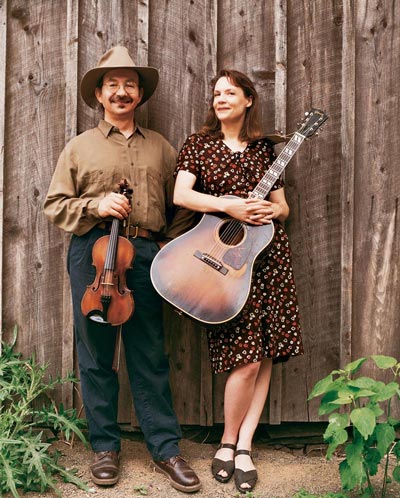 “The third president we played for was not at the White House,” said Ungar. “We were at a theatre in Columbus, Georgia. Jimmy and Rosalynn Carter were on the Board of Directors of this historic theatre and we knew they would be in the audience, but were told they would probably leave at the intermission. So, we played our first set and were backstage with our kids Mike and Ruthy – they have a band of their own, but it was our family band that night.
“The third president we played for was not at the White House,” said Ungar. “We were at a theatre in Columbus, Georgia. Jimmy and Rosalynn Carter were on the Board of Directors of this historic theatre and we knew they would be in the audience, but were told they would probably leave at the intermission. So, we played our first set and were backstage with our kids Mike and Ruthy – they have a band of their own, but it was our family band that night.
“Suddenly, the Secret Service people start coming backstage and then in comes the Carters. He just wants to talk about music and stuff. We had these great conversations and then before they leave, Jimmy asks, ‘Does anybody have a camera? I want to get a picture.’ The promoters of the show gets out his camera and takes the shot. Then Jimmy Carter says, ‘Let’s take one more.’ At the moment the second shot is taken, he kisses Molly on the cheek!”
Ever since the “Civil War” series, the two have become a bit of history buffs about the war. As it turns out, The Hopewell Museum will present “Ere the Shadows Fade: New Jersey’s Civil War Era Photographers” on Sunday, February 3rd at 3:00 p.m. The lecture will feature slides from photographers in the Trenton, Lambertville and Flemington areas whose work documented the life of Civil War-era New Jersey.

 “I enjoy that as much as performing originals,” explained Molly Mason. “A lot of the songs that we spotlight from the past and give people a little background information on are ones that they’re often familiar or somewhat familiar with. They’ve heard it or heard parts of it, whether on a television commercial or in school when they were growing up or whenever, but they don’t know the origin of it or its background. To me, it really connects us with the past and connects us with our ancestors.”
“I enjoy that as much as performing originals,” explained Molly Mason. “A lot of the songs that we spotlight from the past and give people a little background information on are ones that they’re often familiar or somewhat familiar with. They’ve heard it or heard parts of it, whether on a television commercial or in school when they were growing up or whenever, but they don’t know the origin of it or its background. To me, it really connects us with the past and connects us with our ancestors.”



